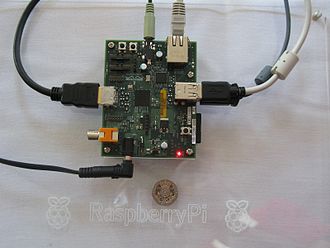OpenSeaMap-dev:HW-logger/specification: Unterschied zwischen den Versionen
K (→NMEA-0183 HW-Logger) |
K (→Solutions) |
||
| Zeile 160: | Zeile 160: | ||
: [[OpenSeaMap-dev:HW-logger/Victor-HW-Logger|TP-Link-HW-Logger of Victor]] | : [[OpenSeaMap-dev:HW-logger/Victor-HW-Logger|TP-Link-HW-Logger of Victor]] | ||
: [https://github.com/openseamap2/depth-logger-raspi Raspberry-Pi von Nils] | : [https://github.com/openseamap2/depth-logger-raspi Raspberry-Pi von Nils] | ||
| + | : [[Datei:NMEA_Logger_Wilfried_Platine_2.pdf]] | ||
Version vom 5. Mai 2013, 08:09 Uhr
For logging the water depth, users need a black box for doing this...
There are several systems of navigation instruments on board:
- 1. NMEA-0183 with single GPS and single sounder
- 2. NMEA-0183 export from a chart plotter, with connected GPS and sounder
- 3. SeaTalk-1 with connected GPS and sounder
- 4. NMEA-2000 with connected GPS and sounder
- 5. Chart plotters writing to an SD-card, (W)LAN or USB, with connected GPS and sounder
We need two HW-Loggers:
- NMEA-0183/SeaTalk-1
- NMEA-2000
Skipper with PC and NMEA-0183 can use our SW-Logger (plus RS-232>USB converter).
Inhaltsverzeichnis
NMEA-0183 HW-Logger
| Nr | what for | Connector | Remarks | |
|---|---|---|---|---|
| 2 | NMEA-0183 | input | screw terminal | 2-channel, opto coupler 1 channel switchable to Seatalk-1 |
| 1 | SD-card | output | slot | |
| 1 | 12 V | power | screw terminal | 5..30 V? <100 mA |
| 1 | Accelerometer | internal | Roll and pitch | |
| 1 | Pulse generator | internal | Time stamping the sounder- and accelerometer data | |
| 1 | Battery | internal | Buffering power interruption. Goldcap? | |
| 2 | LED | operation indicator | Power, data on channel A, data on channel B |
- Processing
- Listening to the two ports and the accelerometer
- Time stamping the sounder- and accelerometer data by GPS-time plus pulse generator
- Filtering/processing the accelerometer data (too much data)
- Merging the data
- Writing the merged data continuously into a file to the SD-chard
- Starting new files (each day?)
- Handling of powerdown (closing the file)
- Body
- Standard (no IPx)
- Mountable by 2 screws on wood
- 3x2 screw terminal, 1x SD-Card-slot
- 3 LED
NMEA-2000 HW-Logger
| Nr | what for | Connector | Remarks | |
|---|---|---|---|---|
| 1 | NMEA-2000 | input | MicroC | opto coupler |
| 1 | SD-card | output | slot | |
| 1 | 12 V | power | screw terminal | 5..30 V? <100 mA |
| 1 | Accelerometer | internal | Roll and pitch | |
| 1 | Pulse generator | internal | Time stamping the sounder- and accelerometer data | |
| 1 | Battery | internal | Buffering power interruption. Goldcap? | |
| 2 | LED | operation indicator | Power, data recording |
- Processing
- Listening to the NMEA-port and the accelerometer
- Time stamping the sounder- and accelerometer data by GPS-time plus pulse generator
- Merging the data
- Writing the merged data continuously into a file to the SD-chard
- Starting new files
- Handling of powerdown (closing the file)
- Body
- Standard (no IPx)
- Mountable by 2 screws on wood
- 1x2 screw terminal, 1x MicroC, 1x SD-Card-slot
- 3 LED
Raspberry-Pi Logger
Raspberry-Pi Sensor-Modul
and expandable complete system for data recording:
Alternatives: OLinuXino, BeagleBone
Features:
Mechanical
PCB to mount on GPIO pin connector of the Raspberry Pi Mounting holes for spacers over mounting hole on RasPi Enclosures for accommodating Raspberry Pi + sensor board, cables, etc Protection class IP.., heat dissipation (3W) should be possible by surface convection Strain relief for connection cables, screw terminals Solder connection for SeaTalk / NMEA cable to the sensor module Pin connector with loop through GPIO contacts Nice to have: Compatibility with existing modules
Electrical
Power supply ?? Opto-isolated RS-422 NMEA-0183 interface power supply Opto-isolated SeaTalk-1 interface with collision detection, Host RGB-LED(s) and 3 GPIO-Pins
Sensor-Board:
SPI or I2C bus, if possible - SW-Driver??
Air pressure sensor
Temperature Sensor
3-axis accelerometer
3-axis magnetic field sensor
Gyro
AD converter, see also
option
RTC module with Goldcap buffer???
CAN interface????
Current sensors and ADC for battery monitoring ??
PWM power amp to drive Sounders? Mixer, OpAmp / AD-converter
EMC compatibility:
Robust against interference in HF, VHF, L-Band (ISM 2.45GHz)
No interfering emissions in HF and VHF bands, the marine radio or GPS
Peripherals
User selectable? Recommended Hardware?
USB
WLAN e.g. Logilink WL0084B (Pollin, 5,95EUR) - there are also those that function as a router?
USB-Serial Adapter
GPS, e.g. Navilock NL-464US (ELV, 29,95EUR)
Memory Stick
USB Hub
UMTS Modem
Other
SD-Card, at least 8GB for operating system (4GByte) and Logs (4GByte)
Optional extensions
Screen
Audio output
Power See above, 12-5 Step-Down, Micro-USB and/or 220V power supply, (Pollin, 3,95EUR)
Links
What is already is available for Raspberry Pi:
